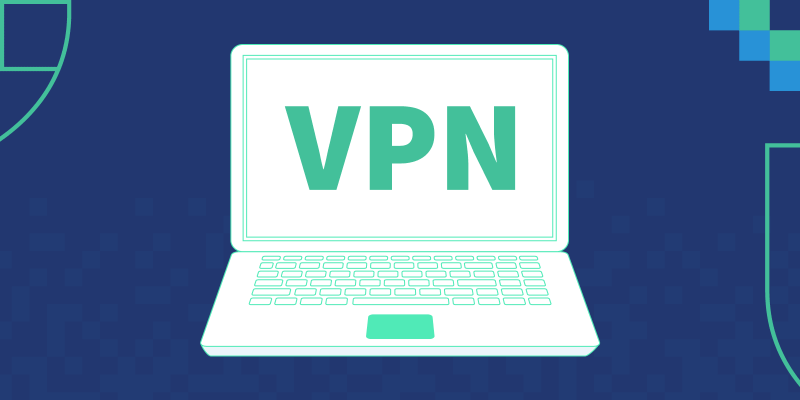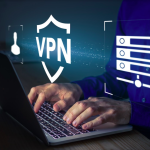In today’s digital era, safeguarding our online privacy and security has become increasingly crucial. A Virtual Private Network (VPN) has recently gained immense popularity as a tool for this purpose. This post delves into the uses of VPNs and the primary objective of utilizing a VPN application. The primary function of a VPN is to ensure the protection of online activity’s privacy and security. By connecting to a VPN, internet traffic is directed through an encrypted tunnel to a remote server, thwarting third parties from discovering the user’s IP address which can divulge their physical location and online behavior. That is the reason VPNs for iPhones, VPNs for Windows, and VPNs for Android devices are a dire need. In addition, using a VPN prevents Internet Service Providers (ISPs), advertisers, and other entities from monitoring user activities, rendering it an indispensable tool for upholding online privacy.
A VPN is used primarily for what purpose?
VPNs are frequently utilized to gain access to content that is limited or obstructed in specific geographical regions. A case in point could be an individual’s use of a VPN to obtain a streaming service only accessible in a particular nation. The VPN allows them to mimic their location as if they were in that country, enabling access to the service.
In nations with strict online regulations, a Virtual Private Network (VPN) can prove beneficial in evading internet censorship and government monitoring. Through the encryption of internet traffic and obfuscation of the user’s IP address, a VPN can assist users in accessing restricted websites and services and enable private communication sans surveillance. A VPN software is primarily utilized to secure and encrypt internet traffic on mobile devices. Most VPN providers offer dedicated applications for smartphones and tablets that make it convenient for users to connect to a VPN while on the move. These apps feature user-friendly interfaces alongside functions such as automatic connection initiation upon startup and kill switches that avoid data leakages if the VPN connection falters.
By utilizing a virtual private network (VPN) application, the user can circumvent geographical restrictions and access content that may be inaccessible in specific regions. Furthermore, a VPN app can safeguard sensitive data transmitted over public Wi-Fi networks, frequently vulnerable to hacking attempts.
Let’s get back to the VPN Protocols.
The world of cybersecurity is in a never-ending flux, and new dangers sprout daily. These menaces require novel solutions to be tackled successfully. One such crucial tool for ensuring online safety today is the Virtual Private Network (VPN). VPNs safeguard internet traffic between devices and servers by encrypting it while masking IP addresses, thus guaranteeing privacy and security. However, not all VPNs can provide equal levels of protection. Providers have come up with various protocols like Point-to-Point Tunneling Protocol (PPTP), Layer 2 Tunneling Protocol (L2TP), Secure Socket Tunneling Protocol (SSTP), and Internet Key Exchange Version 2(IKEv2), among others, to optimize their services’ performance and offer users an optimal experience that suits different environments.
PPTP
One of the earliest VPN protocols, commonly referred to as PPTP or Point-to-Point Tunneling Protocol, was utilized for secure data transmission. It received widespread popularity because of its compatibility with various devices and user-friendly interface. However, it has been discovered that this protocol has many security vulnerabilities that have developed over time and could impact the confidentiality or integrity of transmitted data, making modern options such as OpenVPN or L2TP/IPSec more trustworthy than PPTP. Even though PPTP still offers some encryption capabilities, it is no longer regarded as a suitable alternative for high-risk applications such as online banking or government communications. Nonetheless, organizations with older systems having limited functionalities prefer using PPTP due to its broader accessibility. However, businesses handling sensitive data need safer alternatives instead of relying on this protocol which better aligns with ensuring their mission-critical information’s safety. As we progress in rapidly evolving technology trends, adopting best practices when selecting VPN protocols becomes crucial in safeguarding our digital communication from cyber threats – mainly when risks are exceedingly high!
L2TP protocol
The growing popularity of the L2TP protocol among VPN providers is due to its robust security features. Its encryption capabilities create a secure tunnel that makes interception and snooping virtually impossible, crucial for businesses and organizations accessing sensitive information over public networks. This protocol is often paired with IPsec for an added layer of protection. Despite concerns from some experts about the susceptibility of L2TP to advanced threats like state-sponsored attacks or sophisticated hacking attempts, it still plays a crucial role in enhancing online privacy and safeguarding user data from prying eyes. Its widespread adoption by VPN providers worldwide speaks volumes about its efficacy in securing network connections. Continuous monitoring and multi-factor authentication may be necessary in certain situations to maintain digital privacy and prevent unauthorized access to critical information. Nevertheless, the fundamental aspects of L2TP remain indispensable as cyber threats become increasingly prevalent – highlighting the need for more perplexity and burstiness when approaching cybersecurity issues.
OpenVPN
OpenVPN is an adaptable and versatile protocol that can be customized for various purposes. One of its most prominent features is the ability to provide safe connections for employees or contractors when accessing company resources from remote locations. OpenVPN enables businesses to establish a virtual private network (VPN), which encrypts all data transmitted between the user’s device and corporate network, making it impossible for anyone unauthorized to intercept this connection. However, OpenVPN has capabilities beyond remote access, including establishing site-to-site connections between networks in different geographical areas. In such cases, one or more devices act as VPN gateways on either side and create secure tunnels through which traffic easily passes. With numerous topologies and encryption protocols catering to specific needs, OpenVPN adds value thanks to its adaptability. Furthermore, as mobile networks become increasingly common, companies must guarantee their mobile workforce maintains secure connectivity at all times. Once again, OpenVPN is helpful by delivering clients tailored explicitly towards Android and iOS platforms with solid security features such as multi-factor authentication measures.
Wrapping Up!
In this modern era of technology, where privacy and security reign supreme, it is crucial to have a firm grasp of VPN protocols. With advancements in technology occurring at an unprecedented rate, the need to safeguard sensitive information from hackers and cybercriminals has become more vital. This essay explores a variety of VPN protocols, such as PPTP, L2TP, OpenVPN, and others. Among these protocols lies one that particularly stands out OpenVPN. It boasts excellent flexibility, which makes it easily configurable for diverse scenarios when establishing remote connections between computers or mobile devices over unsecured public networks like the Internet. Compared with other VPN protocols discussed earlier, OpenVPN provides several advantages, including top-notch encryption standards and enhanced capabilities that bypass network restrictions and firewalls.
Furthermore, its open-source quality allows developers to monitor its code for vulnerabilities continually. It’s evident that selecting the appropriate VPN protocol depends on various factors such as speed requirements; level of security needed; type of device being used; location or jurisdiction where data protection laws apply- just to mention but a few. Although there may not be an impeccable solution when choosing which protocol best suits your needs – considering all these aspects will aid in making an informed decision about what works best for you! As a result, maintaining secure online communications should remain everyone’s top priority while utilizing any digital platform!














